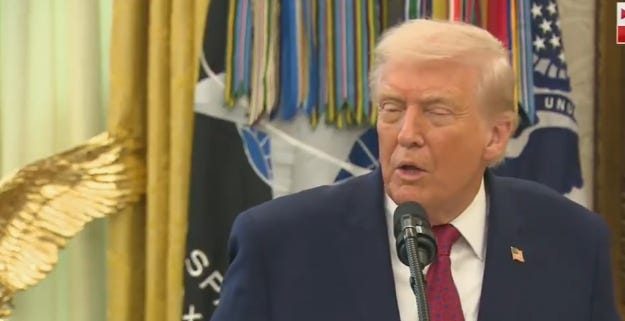
The war in Ukraine has transformed Western European thinking about defending itself against its giant neighbor, Russia. The latest push, proposed last week by the European Union, is a blueprint for a better coordinated military buildup—procuring and manufacturing weapons together rather than separately, country by country. It’s an ambitious plan, in line with other pending continent-wide reforms—deregulation and a single capital market—and like them, it promises increased efficiency and scale in pursuit of shared European goals. What’s unclear is whether the 27 EU members and their allies, including Britain, can put aside national interests for the common good. The stakes could hardly be higher, but the evidence is mixed.
Much has changed in Europe since Russia invaded Ukraine in 2022, with countries across the continent talking a much different game than four years ago. After decades of hoping for good relations with Moscow, most leaders now see their eastern neighbor as an aggressive, revanchist power, preparing potentially for a hot war and already menacing nearby nations with an array of gray-zone weapons—from disinformation and cyberattacks to sabotage of critical infrastructure. Uncertain if an increasingly fickle and isolationist U.S. will stand by them, many Europeans recognize they must prepare to face the enemy alone, and defense is now Topic A in political circles.
Many countries are actively preparing. National defense budgets have increased dramatically—from €218 billion in 2021 to a projected €392 billion in 2025. A generation of innovative startups is competing with seasoned contractors to develop cutting-edge weapons. The most concerned capitals are discussing mandatory conscription, and some have mounted national programs to teach civilian defense.
Still, for all this progress, many across the continent, concerned about the pace of change, wonder if Europe will succeed in translating its bold talk into action.
The problem starts with defense spending. In 2014, shortly after Russia annexed Crimea, all NATO members agreed to increase defense outlays to 2 percent of national GDP. But by 2021, only six had. Last year, driven by President Donald Trump’s bullying and fear of Russian President Vladimir Putin, NATO set a new goal of 5 percent. But only part of that total—3.5 percent of economic output—must be spent on weapons and ammunition, with countries allowed to use the remaining 1.5 percent for “critical infrastructure,” and many proposed infrastructure projects, like a much-ridiculed bridge between Sicily and the Italian mainland, hardly meet the laugh test.
Along with these national commitments, in 2024, European Commission President Ursula von der Leyen set a €500 billion goal for EU defense spending over the next decade. Officials across the union lauded the idea, and some spoke ambitiously about including €500 billion in the next EU seven-year budget. That now seems unlikely, but Brussels has moved to make good on von der Leyen’s goal with the Security Action for Europe (SAFE) initiative, borrowing €150 billion to finance low-interest loans for member states working to boost defense production. The bloc has also enacted a four-year rule change, the “national escape clause,” that could make it easier for capitals to spend an estimated €650 billion from their own budgets on defense.
If this money comes through, it will be a huge increase—according to one estimate, leaked to the press this weekend, it could amount to as much as €2.4 trillion over four years. European funding is unlikely to match the U.S. defense budget, which totaled $997 billion in 2024, but it could rival Russian and even Chinese spending, estimated at $149 billion and $314 billion, respectively, in 2024.
The problem: It will be up to national leaders to take advantage of the new EU incentives, and many may hesitate for financial and political reasons—neither the far left nor the far right is on board in many countries. Meanwhile, the EU has struggled to pass the much smaller €1.5 billion European Defense Industrial Strategy, proposed in 2024 but still not formally approved.
So too with European aid for Ukraine. Already in the first year of the war, many in Europe talked a better game than the U.S.—shrewder about Putin and with a better understanding of Ukraine’s needs. These European voices have grown stronger with time, making up for Americans, who have grown hesitant, if not reluctant, to help. According to one estimate, in 2022, Europe provided €16.5 billion in military aid—compared to Washington’s €24 billion. But by 2024, the ratio had reversed: Ukraine received €42 billion from Europe and €16.5 billion from the U.S. Washington has allocated no new aid since Trump took office in January, while Europe provided €24 billion in just six months in 2025.
This aid has been crucial for Ukraine, sustaining it—indeed, guaranteeing its survival—even as Russia’s military grew stronger and Moscow learned from its mistakes in the early months of the war. But European aid dropped dramatically this summer to less than half the monthly average earlier in the year, and the continent still devotes only a tiny fraction of its annual GDP to Ukraine. From 2022 to 2024, the biggest donors, including Germany and Britain, allocated just 0.2 percent of economic output, while smaller countries in southern Europe spent less than 0.1 percent.
It isn’t hard to understand why. National budgets are tight. Two of the bloc’s biggest member states—France and the United Kingdom—face crippling debt crises. Until recently, Germany was constrained by a constitutional “debt brake,” barring Berlin from accruing a deficit of more than 0.35 percent of GDP.
Still, the math is straightforward: when it comes to military spending, Europeans’ actions do not match their rhetoric—on their own defense or aid to Ukraine.
Nor is money the only issue. Even more challenging than budget constraints, the EU is hamstrung by a deep-rooted inclination to put national interest first—at the expense of collective interest. Former Italian prime minister Enrico Letta illustrated the problem metaphorically in a much-cited 2024 EU report on European competitiveness. Letta had hoped to gather input for his paper in cities across the continent, traveling from capital to capital by high-speed rail. But he could not make the trip by rail because national railway systems run most European high-speed trains, and few connect to high-speed trains in neighboring countries.
Defense investment is similarly fragmented. Europe makes five different types of main battle tanks. At least seven countries produce artillery. French defense giant Thales competes head-to-head with Sweden’s Saab and Germany’s Hensoldt to sell defense electronics and sensors to developing countries worldwide, to cite just one example.
It’s hard to find a policymaker or defense expert who doesn’t extol the virtues of cooperation. Coordinated planning, collective procurement, and joint production would allow the continent to produce much more for less and accelerate its urgently needed military buildup. But age-old habits and ingrained interests argue against the collaborative action that’s needed.
No project illustrates the challenge more clearly than the sputtering partnership between France’s Dassault and Germany’s Airbus to build a sixth-generation fighter jet, the Future Combat Air System (FCAS). Launched in 2017 by Berlin and Paris and later joined by Madrid, the €100 billion initiative is meant to be an equal collaboration—one country, one vote—delivering a state-of-the-art, AI-enhanced fighting platform by 2040.
But long-running tensions between the industry partners erupted publicly this fall when Dassault announced it wanted a freer hand to complete the project’s next phase. If Germany couldn’t agree, the company would go it alone. German Chancellor Friedrich Merz and French President Emmanuel Macron are eager to resolve the conflict, but the manufacturers seem to be at an impasse, and by all accounts, the high-profile collaboration is on the verge of collapse.
The new EU proposal, the Defense Readiness Roundup 2030, will be debated this week at a meeting of the bloc’s 27 national leaders. It attempts to address this entrenched fragmentation. The document identifies nine “priority areas”— including ground combat, artillery, drones, and air and missile defense—and urges member states to tackle them collaboratively. Countries are encouraged to collaborate on producing and purchasing weapons. Recommended approaches include joint ventures and “capability coalitions.”
“There is a clear need,” the report states, “to invest more, invest together and invest European” rather than buying off-the-shelf products from American or Asian defense contractors. Building on the €150 billion set aside for low-interest SAFE loans—funding available only for joint production by two or more EU or allied countries—the report suggests there may be more money to come for collaborative projects.
The roadmap is not naïve. Its authors know better than to ask member states to cede national control, particularly of defense. But the paper sets an ambitious goal: that by 2020, 40 percent of European defense production—more than double the current share—will be collaborative.
The obstacles to collective action start with history—80 years of European dependence on American leadership for all things defense-related. Since the launch of the transatlantic alliance in 1949, Washington has been responsible for NATO command and control, and members have rarely cooperated except at the direction of the U.S. The EU’s collective decision-making process poses a second major hurdle. Virtually all big bloc decisions require unanimity, now routinely stymied by pro-Russian Hungarian Prime Minister Viktor Orbán and other populist, far-right leaders. Also problematic: the continent’s lack of a single credit market, slowing the flow of capital and inhibiting cross-border investments.
What’s needed is the political will to cut through these thickets, advancing difficult political and financial reforms and subordinating national interest to the common good. Can Europe pull this off? Will it do so quickly enough? Western intelligence services predict the Kremlin could be ready for full-scale war in Western Europe by 2030 and possibly as soon as 2027. Meanwhile, the gray-zone war that escalated dramatically last month with aerial incursions in a half dozen countries is all but certain to get hotter. A robust defense buildup is the only way to fend off a possible Russian attack, preserving European peace and prosperity.
There is reason for hope. In contrast to the U.S., European leaders and much of the public are aware of the threat, and many countries have made impressive strides. But nothing has come easily. There are objections and obstacles at every step, and the pace of change has been painfully slow.
This week will bring two critical tests as Europeans debate the commission’s defense spending proposal and respond to Trump’s latest pendulum swing on Ukraine—another strong tilt toward Moscow. EU founding father Jean Monet’s often quoted remark has rarely seemed more apt: “Europe will be forged in crises and will be the sum of the solutions adopted for those crises.” Few crises in the continent’s post-World War II history have seemed as urgent as the potentially existential challenge it faces today, and the outcome is far from clear.
The post Can Europe Turn Tough Talk on Russia into Action? appeared first on Washington Monthly.


 1 month ago
36
1 month ago
36 










 Bengali (Bangladesh) ·
Bengali (Bangladesh) ·  English (United States) ·
English (United States) ·